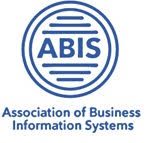Attendance Reaches High of 74
Themes for Conference are Shifting
Officers in the late 1980s and early 1990s felt a strong need to perpetuate the earlier success of SASA. We sincerely appreciated those who had worked to establish the organization and fill a key need for faculty in the region. During the 1980s, before SASA members had email at their schools, the officers of SASA met face to face once a year for a planning meeting. As I recall, some years these meetings were held in the Dallas area. The planning meeting usually took place once faculty finished their spring semester obligations and provided a great way for those coming into the officer rotation to learn more about their duties and to brain storm ways to increase attendance at the next year’s meeting.
SASA continued to distribute copies of bound proceedings at each spring’s meeting; these were prepared by the group’s Secretary-Treasurer and provided both documentation of papers presented and often provided research materials for future papers in later years. The 1991 Proceedings and Directory listed 17 members from Arkansas schools attending the 1990 conference, 12 from Louisiana, 17 from Oklahoma, 17 from Texas, and 11 from other states. This 1990 attendance reflects 74 attendees, more than double the typical attendance in the most recent years. These numbers must be interpreted with some caution, however, as some schools in 1990 may have provided funds for faculty to attend even if they did not have a paper to present. I do not think I can personally name one school that does this today.
The 1991 Distinguished Paper was authored by Betty Rogers, who was teaching at the University of Central Arkansas. The paper focused on recruitment difficulties encountered in filling administrative services faculty positions in mid-south AACSB and NABTE Institutions. A sampling of other papers presented that year related to topics such as computer literacy skills in micro applications courses, spreadsheet usage among administrative systems graduates, corporate training and development, developing technological office procedures courses, planning and implementing training courses in business school curricula, computer viruses, high school business computing, office systems as a major, and training delivery methods. As this list reflects, the organization was moving more and more into microcomputers and training. During the late 80’s and early 90’s, the group often brought in keynote speakers from industry to address the group.
The officers and members sometimes encountered situations that suggested that not all SWFAD attendees and/or school deans recognized the focus of the organization and understood that the group had largely moved beyond papers about shorthand and typing as traditional business education topics. Discussion was beginning on whether a name change would better represent the group’s focus and research interests. This discussion and research would continue for a few years before action was taken.
Prepared March 9, 2015 by Betty Kleen
